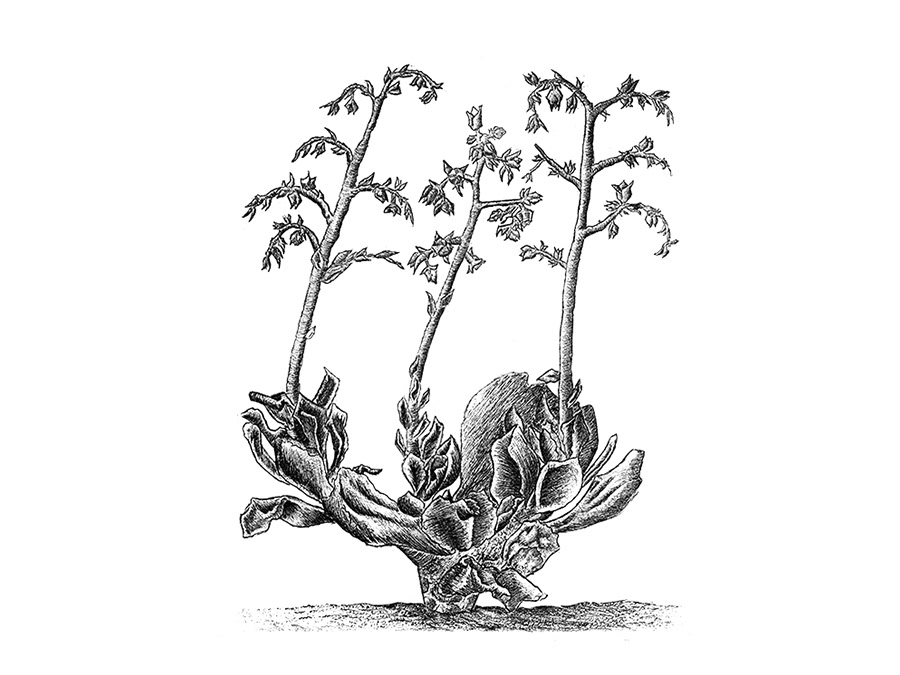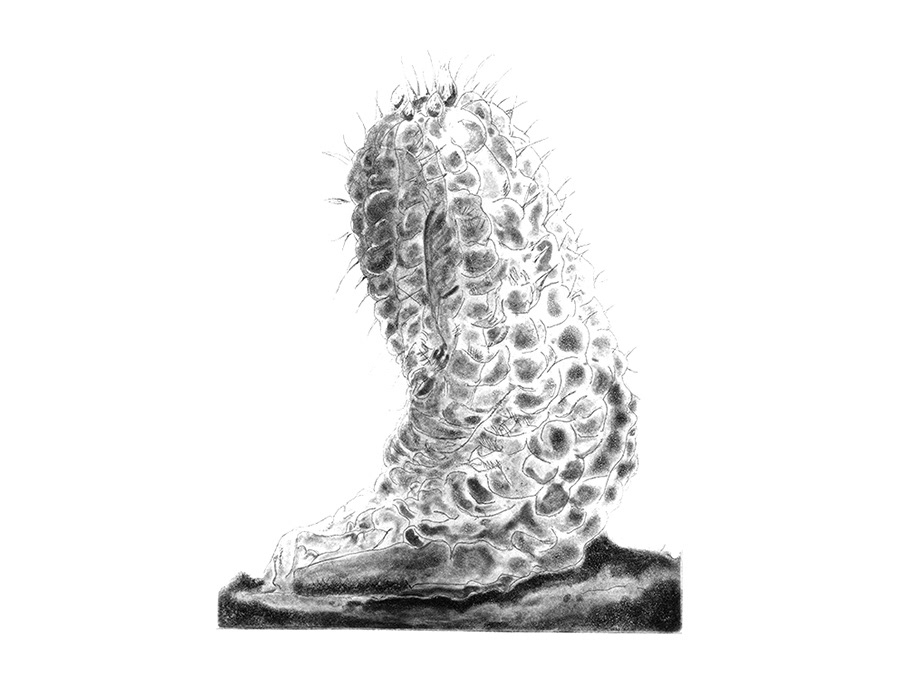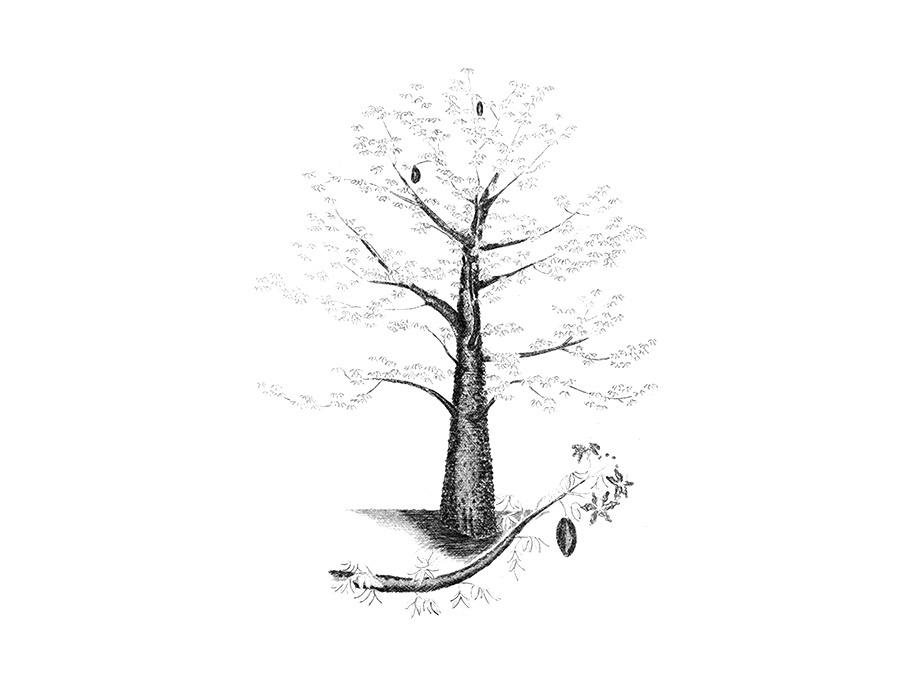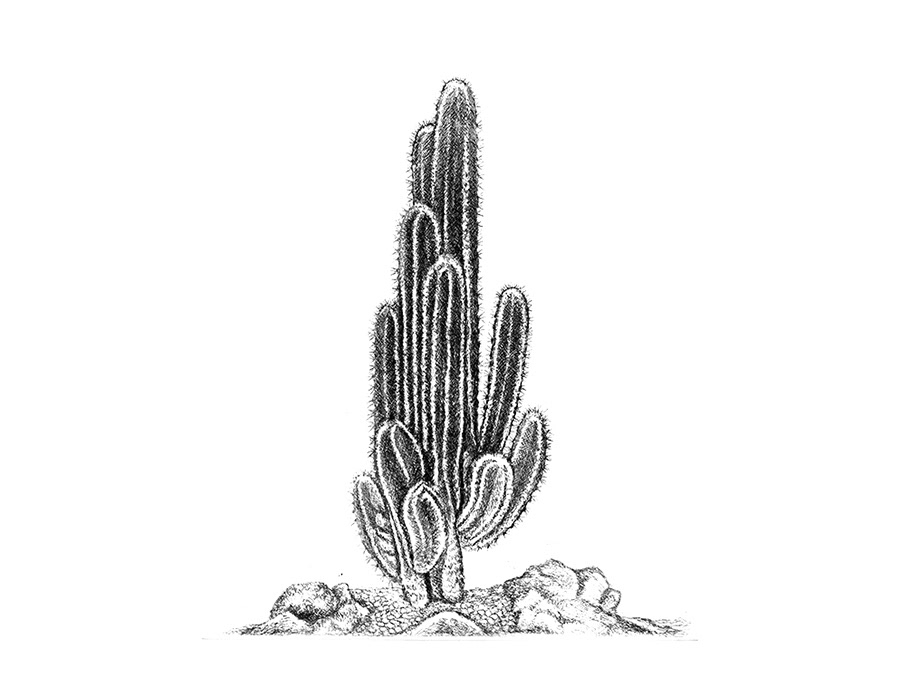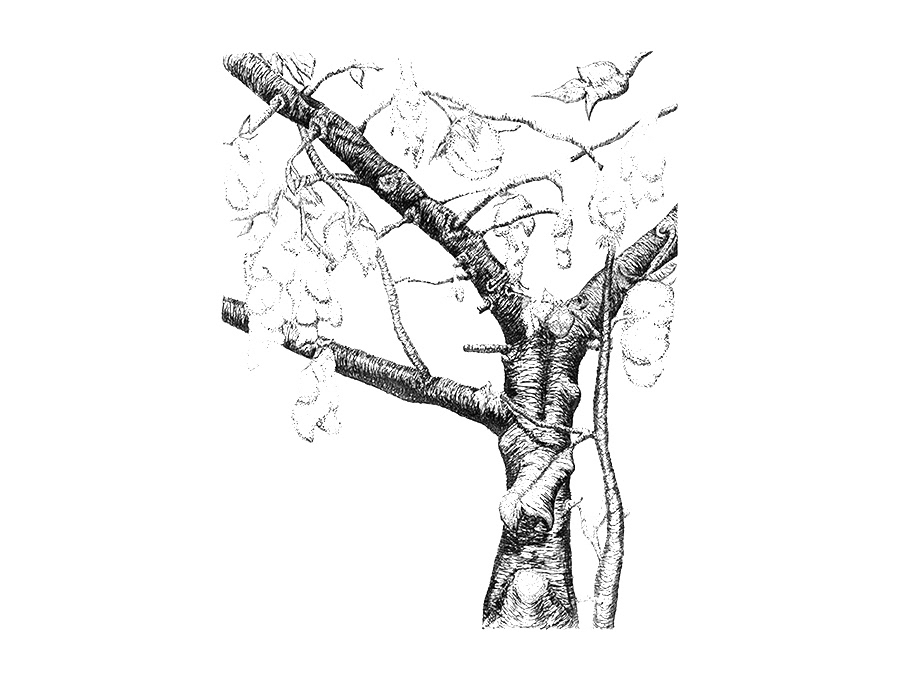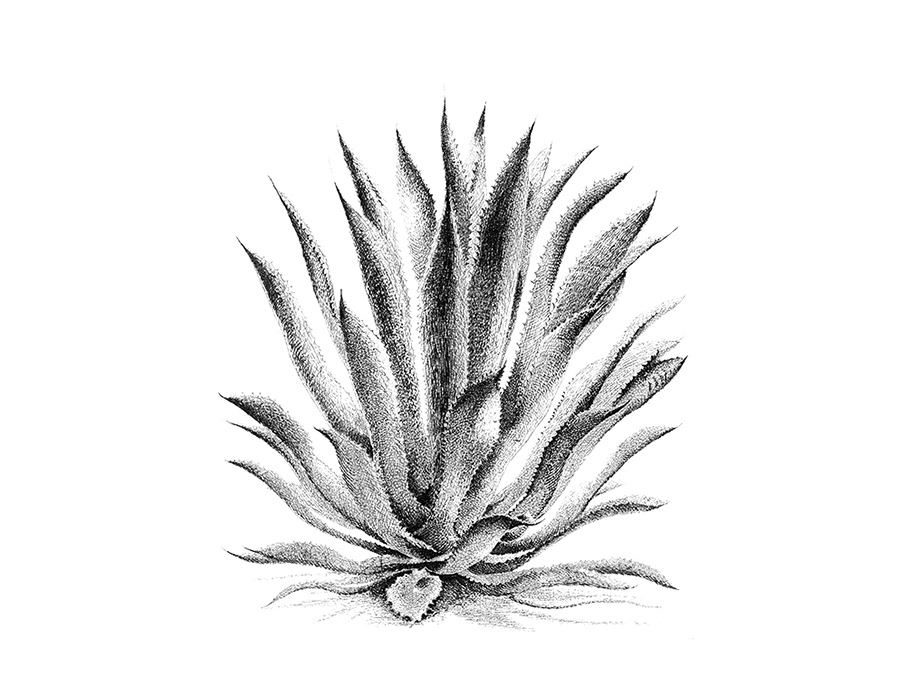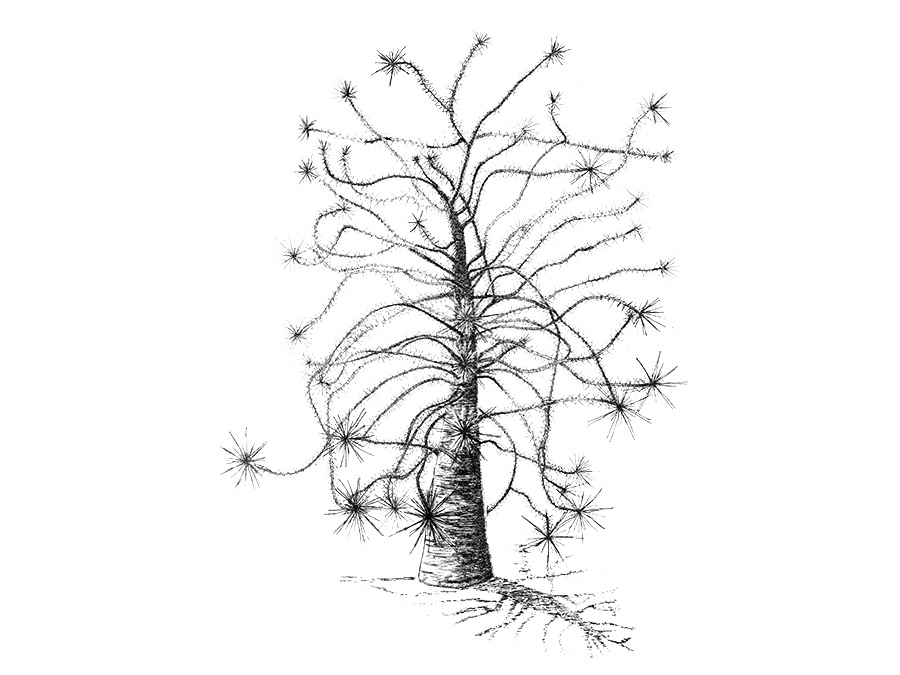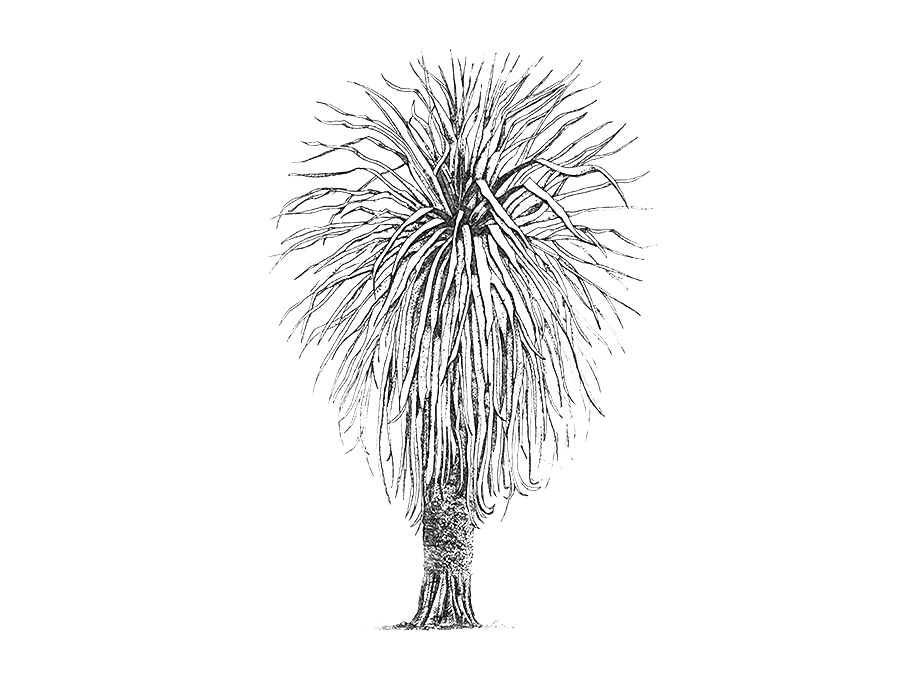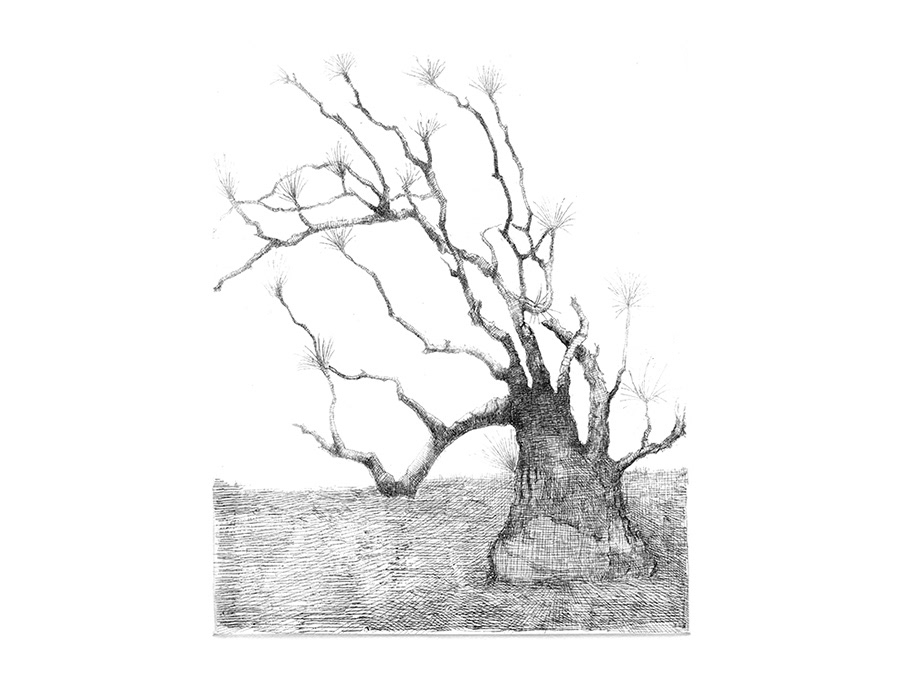Prickly pear cactus • Opuntia amyclaea
This domesticated prickly pear cactus comes from Yuyuza, a municipality in Santiago Tejupan, in the Mixteca Alta region. The species is widely cultivated in Central Mexico, mainly for its fruit. The consumption of tunas (prickly pear fruit) and nopalitos (young cactus pads) has a long history in Mexico. The archaeological record of Guilá Naquitz indicates that both were among the most important foods for the families living through hunting and gathering in the Oaxaca Valley ten thousand years ago. The genus Opuntia, comprising more than 200 species, is distributed from British Columbia in the northwest, Massachusetts in the northeast, to the Mogollon Rim in the extreme south of the continent. It belongs to the cacti family, which is confined to the Americas; in fact, Opuntias define the distribution of the entire family. Besides the nopales, the genus includes the chollas and tasajillos from Northern Mexico, as well as the bichibixíos or panchovillos from Oaxaca. The pads of the nopales, called cladodes by botanists, are actually enlarged stems where photosynthesis takes place, as most cacti have lost their leaves. Interestingly, the new pads of Opuntias grow covered with small vestigial leaves that soon dry up and fall off the plant. The thickened cladodes, which store water, are covered by a waxy cuticle that protects them from dehydration. After praising the symbolism of cacti in our country, Neruda suggests in one of his poems that there is a relationship between them and the groundwater. "The countries lie next to the rivers, seeking After exalting the symbolism of cacti in our country, Neruda suggests in one of his poems that there is a relationship between them and the aquifers: "Countries lie next to the rivers, seeking the soft chest, the lips of the planet, you, Mexico, touched the nests of the thorn ... ... I know your crown of nopales and I know that beneath its roots your underground statue, Mexico, is built with the secret waters of the earth ..." (In the Walls of Mexico, 1943) In reality, cacti have shallow roots designed to quickly absorb rainfall. In the garden, we have had to dig deep pits filled with gravel so that the groundwater does not rot these plants, so spiny and yet so susceptible. We are grateful to Biologist Jerónimo Reyes Santiago from the UNAM Botanical Garden for identifying this species. Bibliography: • Bravo Hollis, Helio, and Hernando Sánchez Mejorada 1978. "The Cactaceae of Mexico, Vol. l." UNAM, Mexico City. • Flannery, Kent V. (ed.) 1986. "Guilá Naquitz; Archaic foraging and early agriculture in Oaxaca, Mexico." Academic Press, Orlando. • Neruda, Pablo 1957. "Complete Works l." Editorial Losada, S.A., Buenos Aires. ("In the Walls of Mexico [1943]" is section XIII of "I Am," the fifteenth part of Canto General.)

